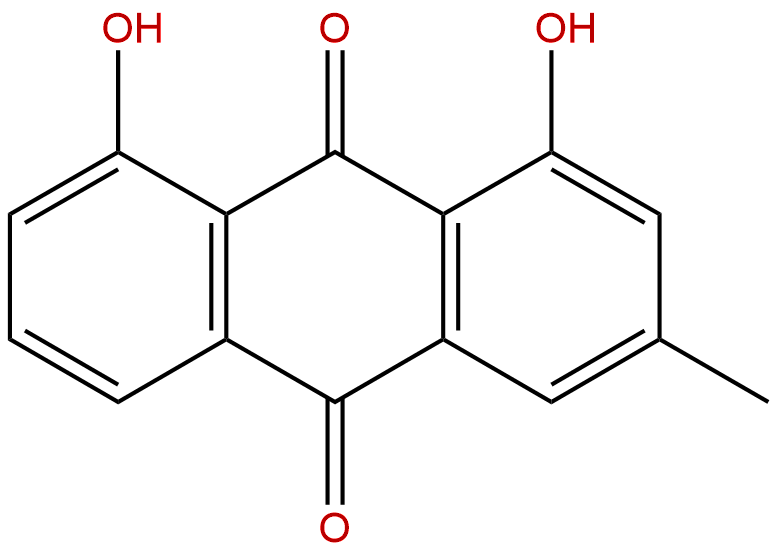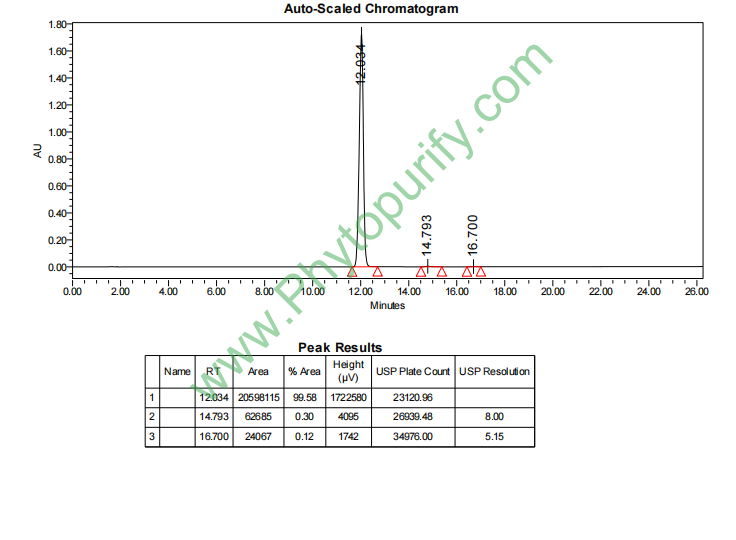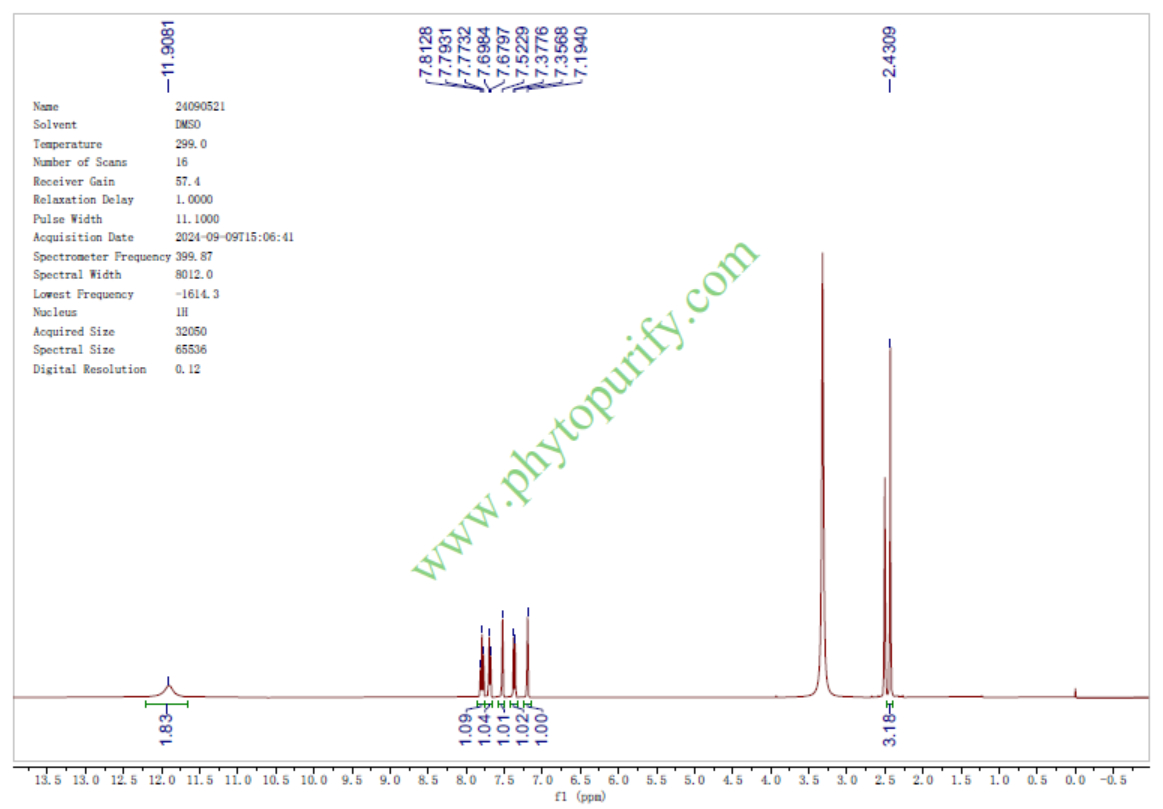
ChrysophanolCAS No.:481-74-3
|
||||||||||
 |
|
|
||||||||

| Catalogue No.: | BP0348 |
| Formula: | C15H10O4 |
| Mol Weight: | 254.241 |
Product name: Chrysophanol
Synonym name: Chrysophanic acid; 1,8-Dihydroxy-3-methylanthraquinone
Catalogue No.: BP0348
Cas No.: 481-74-3
Formula: C15H10O4
Mol Weight: 254.241
Botanical Source: Cassia, Rumex, Rheum, sphodelus, Muehlenbeckia spp., Monilinia fructicola and others. V. widely distributed in plants and also found in the marine annelid Urechis unicinctus
Physical Description: Yellow powder
Type of Compound: Anthraquinones
Purity: 95%~99%
Analysis Method: HPLC-DAD or/and HPLC-ELSD
Identification Method: Mass, NMR
Packing: Brown vial or HDPE plastic bottle
Storage: Store in a well closed container, protected from air and light. Put into refrigerate or freeze for long term storage.
Whenever possible, you should prepare and use solutions on the same day. However, if you need to make up stock solutions in advance, we recommend that you store the solution as aliquots in tightly sealed vials at -20℃. Generally, these will be useable for up to two weeks.
The product could be supplied from milligrams to grams, up to kilograms
Inquire for bulk scale.
Descriptions:
Chrysophanol has anti-inflammatory activity through the suppression of NF-κB/caspase-1 activation in vitro and in vivo.[1]
Chrysophanol induces necrosis through the production of ROS and alteration of ATP levels in J5 human liver cancer cells.[2]
Chrysophanol has mild cytotoxicity and anti-diabetic properties, it up to 100 microM exerts mild glucose transport activity and elevates the tyrosine phosphorylation of IR via tyrosine phosphatase 1B inhibition (IC50=79.86+/-0.12 microM), thus it could play metabolic roles in the insulin-stimulated glucose transport pathway.[3]
Chrysophanol and physcion, are main active compounds of the plant Baill, has is active against plant powdery mildew, and physcion is much more bioactive than chrysophanol against these powdery mildews.[4]
Chrysophanol can inhibit NALP3 inflammasome activation and ameliorate cerebral ischemia/reperfusion in mice.[5]
References:
[1] Sujin K, Mincheol K, Byongjoo L, et al. Molecules, 2010, 15(9):6436-51.
[2] Lu C C, Yang J S, Huang A C, et al. Mol Nutr Food Res, 2010, 54(7):967–76.
[3] Lee M S, Sohn C B. Biol Pharm Bull, 2008, 31(11):2154-7.
[4] Yang X, Yang L, Wang S, et al. Pest Manag Sci, 2007, 63(5):511-5.
[5] Zhang N, Zhang X, Liu X, et al. Mediat Inflamm, 2014, 2014(1):289-339.
[6] Tang W F, Yu Q, Wan M H, et al. Biomed Chromatogr, 2007, 21(7):701-7.
HPLC of Chrysophanol

HNMR of Chrysophanol
